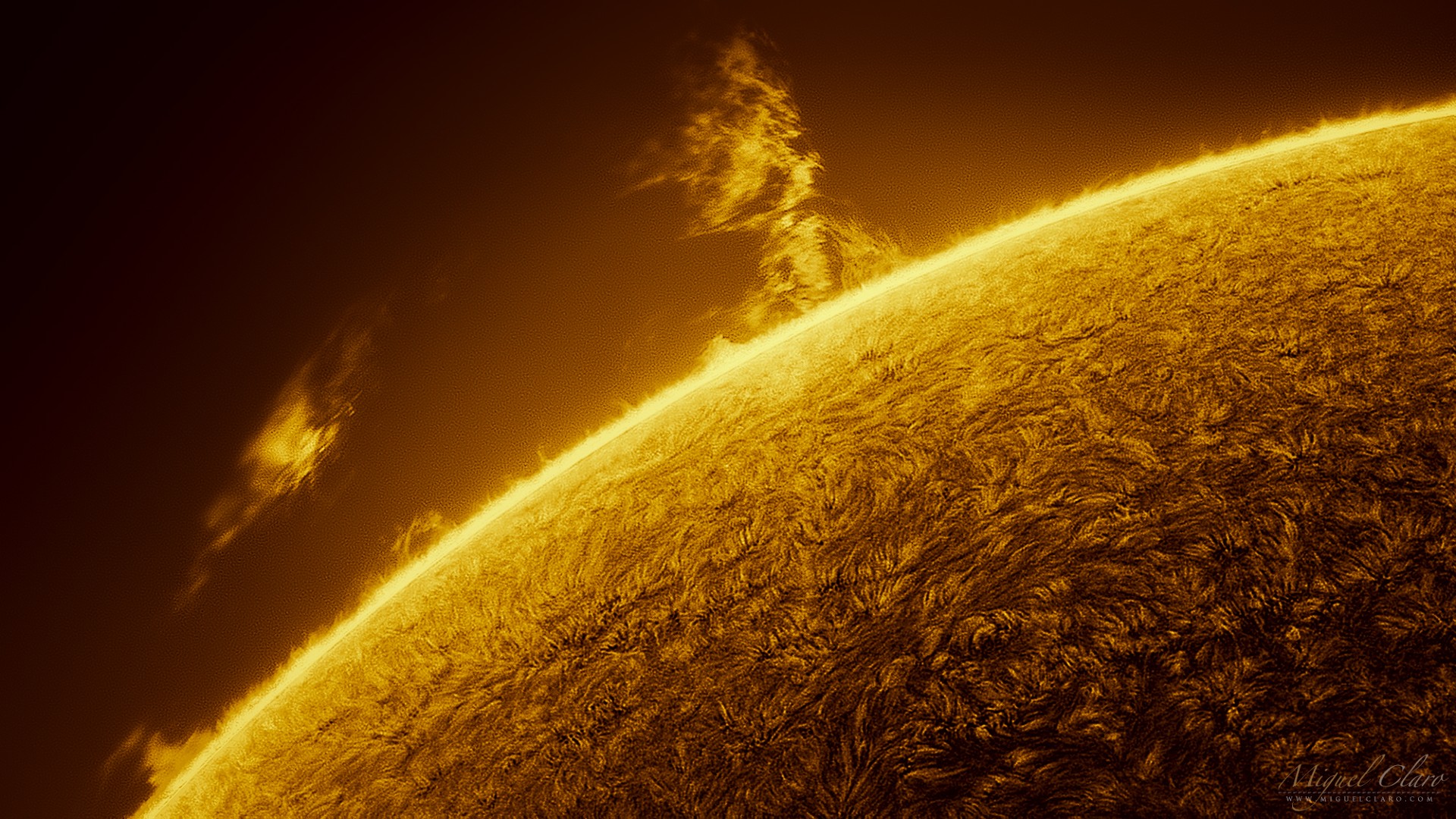
Miguel Claro is a professional photographer, author and science communicator based in Lisbon, Portugal, who creates spectacular images of the night sky. As a European Southern Observatory Photo Ambassador and member of The World At Night and the official astrophotographer of the Dark Sky Alqueva Reserve, he specializes in astronomical "Skyscapes" that connect both Earth and the night sky.
On Feb. 22, 2022, a gigantic solar prominence formed on the surface of the sun, blasting a large coronal mass ejection (CME) into space.
Solar prominences, or filaments, are large loops of plasma flowing along twisted magnetic fields that extend outward from the sun's surface. They are attached to the sun's photosphere, or visible outer layer of its atmosphere, and while they can form in just a day, they can last for months. Some prominences can extend for thousands of miles into space. Solar scientists still aren't exactly sure how they form.
This was likely the highest prominence I have witnessed and recorded to date. The prominence appears so tall when compared to the sun's disk that it appears that we dozens of Earths could fit inside of it.
Related: Watch giant loop of plasma dance above the sun in stunning video

This was my most stressful and luckiest capture. As soon as I realized that the prominence was growing so fast and so drastically, I had to quickly decide what to do. So I decided to interrupt the first sequence and rotate the camera, framing again for the new composition, to be able to keep capturing this growing giant ejection.
That day, the conditions for solar photography were good, not perfect, but nice enough for a time-lapse. So I made a huge effort of gathering as much images as possible. The final result is a 4K high resolution solar movie comprising around 2 hours and 15 minutes, captured from the Dark Sky® Alqueva region of Portugal.
With a total solar eclipse arriving on April 8, 2024, you may want to take your own photos or videos of the sun. If so, be sure to take all precautions.
The first thing to be aware of is that viewing the sun or a solar eclipse can be dangerous without the right equipment. Never look directly at the sun with the naked eye, especially through additional optics like telescopes or binoculars. Whatever gear you use, make sure it has a certified solar filter, or a smart telescope with a solar filter like the Unistellar Equinox 2 might be your best bet.
Editor's Note: If you snap an image of the sun - taking all precautions - and would like to share it with Space.com’s readers, send your photo(s), comments, and your name and location to spacephotos@space.com.







